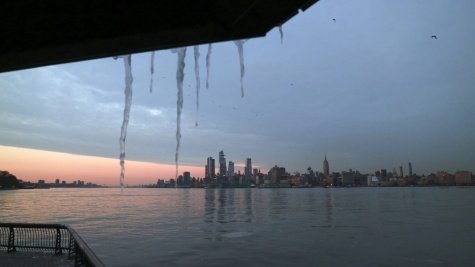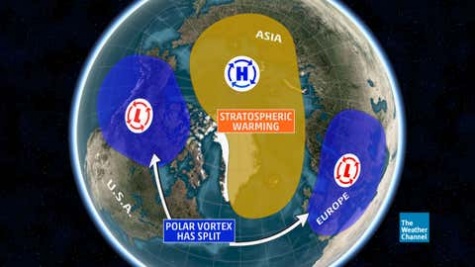
Sosie Casteel | Writer
January 15, 2021
In early January, the temperature in the stratosphere over Siberia rose about 100 degrees. The resulting mass of warm air is pushing the polar vortex off its axis.
The polar vortex is a mass of low-pressure, cold air in the troposphere (the atmospheric layer where weather occurs). There is another, much smaller, polar vortex in the next layer, the stratosphere. It moves counterclockwise so as to keep the cold air closer to the poles. During winter in the Northern Hemisphere, the polar vortex uses the jet stream to send cold air southward over America; this is often associated with sudden drops in temperature in the US.

A disruption of the polar vortex is not unconventional; “stratospheric warming events happen about every other year,” atmospheric scientist Andrea Lopez Lang said. A stable polar vortex, such as the one last year, keeps the cold air at the poles. But this year is different.
“Based on my observations, the polar vortex is less consistent,” Environmental Science teacher Bradley Kerr said. “It’s extending much further South.”
The disruption in the polar vortex may send frigid cold Arctic blasts and snowstorms hurling towards the U.S. Midwest and the mid-latitude areas of Europe. However, it’s still too soon to predict. “My mom’s side of the family is hoping it doesn’t get much colder,” junior Logan Hardison said. “They all live in Michigan.”
Scientists are researching the relationship between the warming of the Arctic (Arctic amplification) and the destabilization of the polar vortex. Although their connection isn’t clear yet, scientists believe that arctic amplification may directly impact the stratospheric polar vortex. “The warming of the Arctic shifts weather patterns,” junior Megan Moe said. “This causes people to become confused because how can “global warming” cause extreme winters, and it is used as ammunition by climate change deniers, which is incredibly dangerous seeing as it’s a direct cause of climate change.”
The recent disruption of the polar vortex is stronger than normal, however, and we don’t yet know what that means weather-wise. When asked about his predictions for the effects of the split in the vortex, Kerr ultimately took the same position as National Geographic. “I’m looking to see how the polar vortex will interact with La Niña, but it’s really too soon to tell.”

Leave a Reply